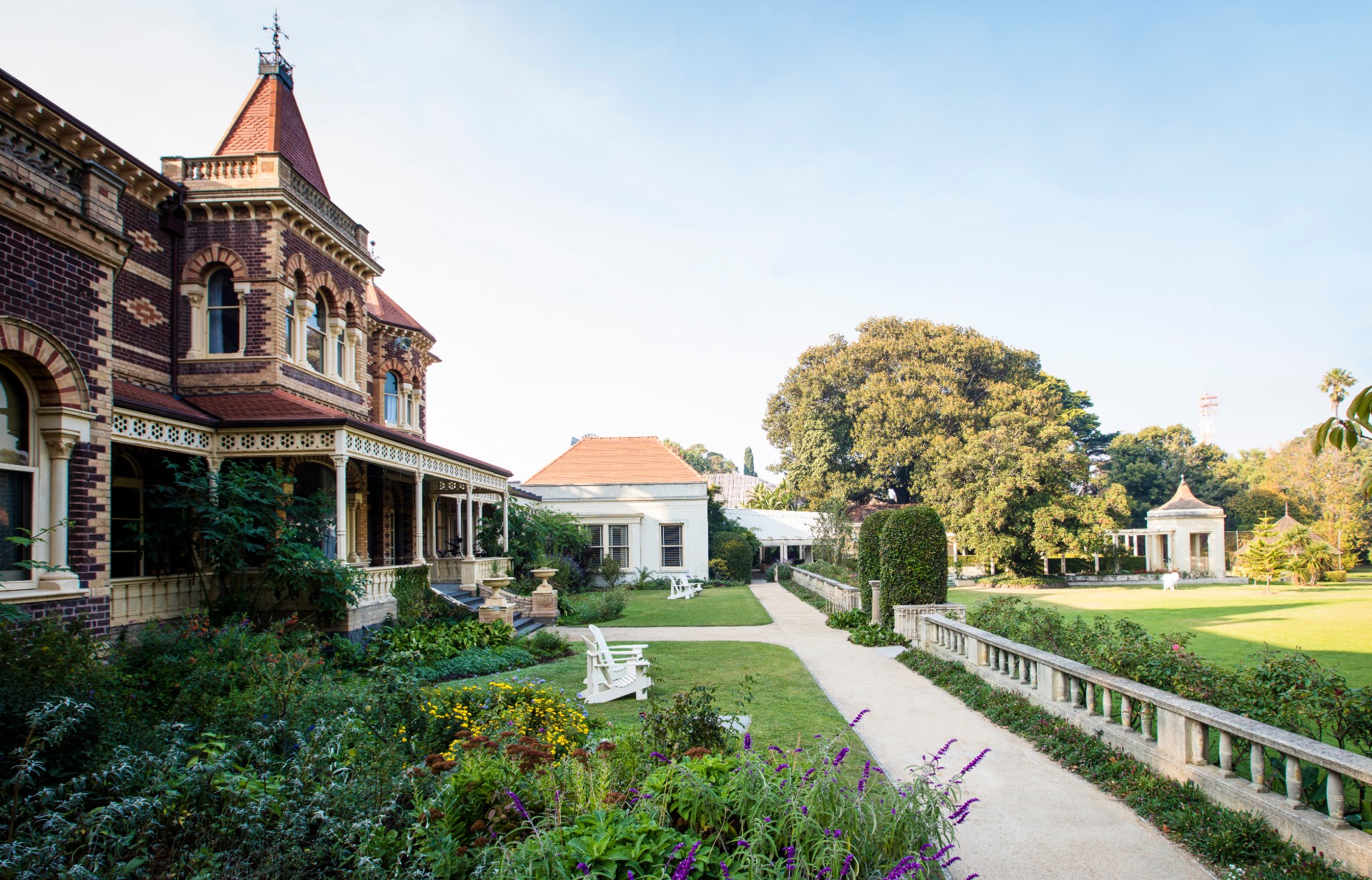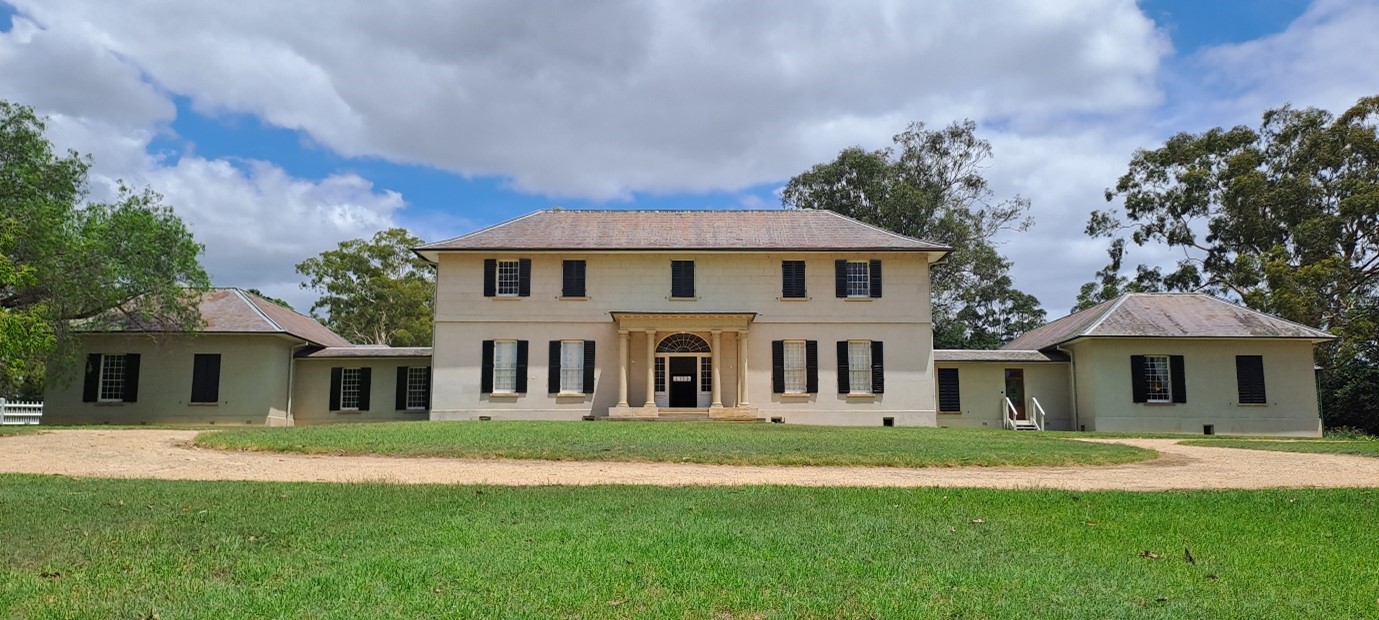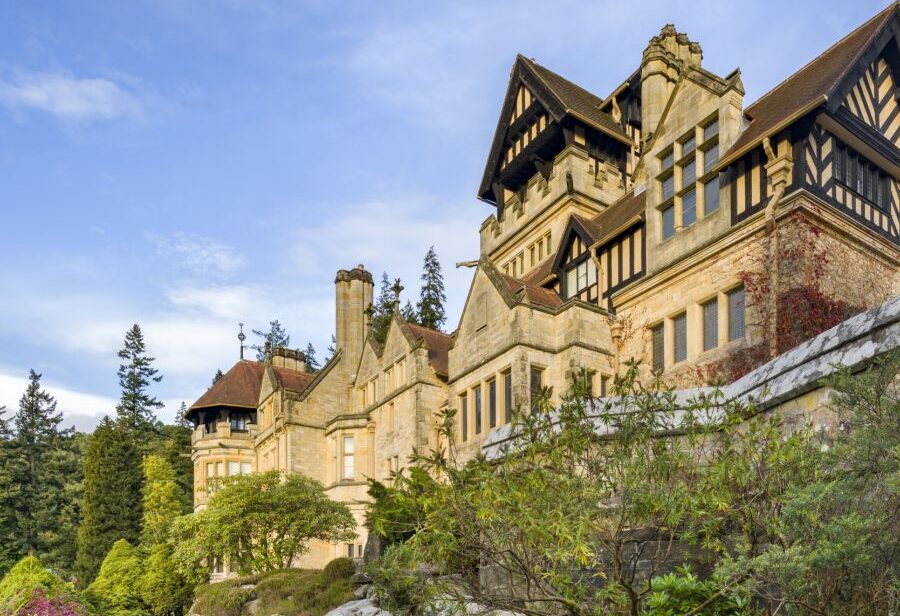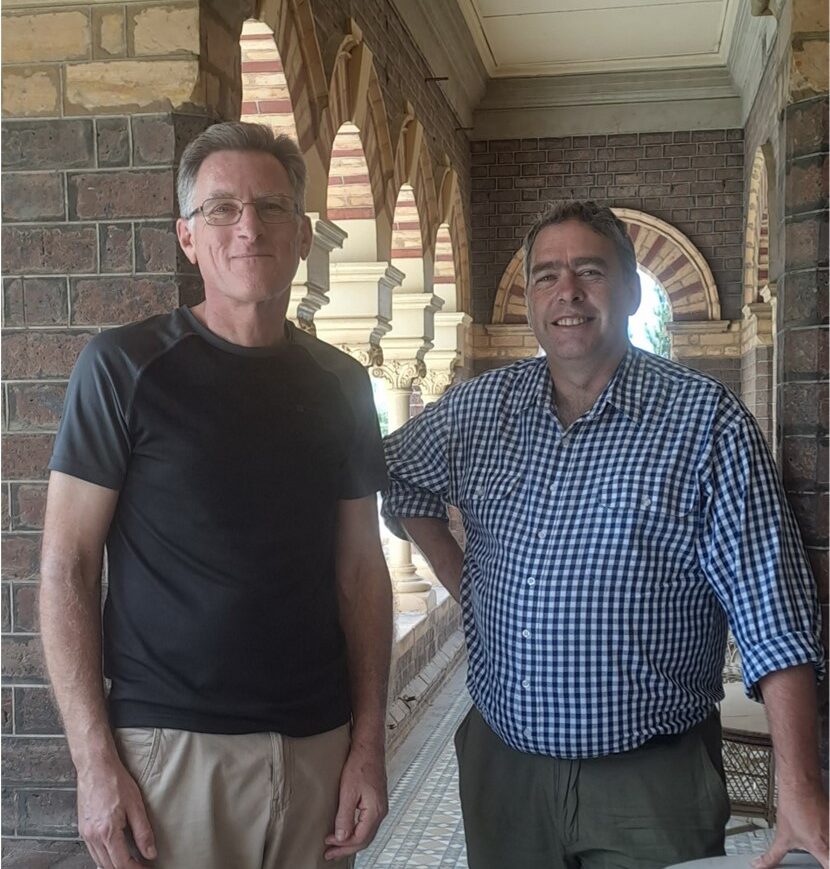An exploration down under
A blog by John O’Brien, General Manager, Cragside, National Trust, on how a TAP INTO grant has enabled new connections to grow with Rippon Lea in Australia.
In 2022 Catherine Leonard, INTO Secretary-General, approached me to suggest that there might be mutual benefit in connecting with our National Trust of Australia colleagues at Rippon Lea, given the similarities between that property and Cragside.
We agreed that there would be potential for learning from, and sharing with, each other. It can take time for good things to happen and, after some consideration on both sides, we all joined a video call in early 2023 to meet virtually and establish what the appetite was for a twinning partnership.

Rippon Lea estate, National Trust of Australia – Victoria
TAP INTO grants
As my counterpart, Justin Buckley, Executive Manager South City Properties and National Trust Gardens (Victoria), and I described the stories of our respective properties, it became clear that they had so much in common and we were determined to proceed.
Justin and I applied for TAP INTO grants to make reciprocal visits possible. Justin came to England in September, and I was fortunate to visit Australia in December.
My first port of call was Rippon Lea in Melbourne, and what a brilliant place it is. Justin proved a perfect host and gave me great insight into the property. He facilitated visits to other Victoria properties – Labassa, Portable Iron Houses, Como House & Garden, Melbourne Old Gaol, and Endeavour Fern Gully.
I visited other non-National Trust destinations such as Beleura House & Gardens, the National Gallery of Victoria, and the Royal Botanic Gardens Victoria. Justin even showed me a pair of Armstrong cannon at Hopetoun Gardens, so it felt like home from home!
Meeting National Trust New South Wales
I also spent time with the National Trust New South Wales (NSW). David Burdon, Conservation Director for NSW, had put together a great programme for the few days I was there, including a brilliant personal tour of Sydney city centre.
Craig McPherson, the Senior Curator, kindly escorted me around a number of NSW properties, including the National Trust Centre (originally a historic military hospital), Lindesay, and Old Government House, Parramatta -a UNESCO World Heritage Site.
He also arranged a visit to Elizabeth Bay House, an important historic building in Sydney run by Museums of History, New South Wales rather than the Trust.
Palm House inspiration
I could not resist a visit to the Royal Botanic Gardens New South Wales, where I found a recently restored 1870s Palm House – the oldest glass house in New South Wales, built only a decade or so after the hugely significant Orchard House at Cragside, which we are hoping to rescue from collapse.

Old Government House, NSW
Learning about membership
As charities like ours, the Victoria and New South Wales Trusts always have greater financial need than available funding. The membership base is much smaller and, whilst important support for the organisations, it cannot provide the financial contribution from which the Trust here benefits.
Those properties in both states that were suited to events and hospitality were geared towards maximising that potential, from weddings to filming. Understandably, that has implications for opening and the visitor experience, with a challenging balance to achieve.
I had not realised that the National Trust of Australia is in fact a union of independent National Trusts representing the respective states and territories, eg: Victoria, New South Wales. Essentially it is the National Trusts of Australia. Membership is assigned to the respective states and territories as well.
Shared goals
They have the same overall goals as the National Trust here and comparable challenges in terms of the macro environmental and economic backdrop to which they need to respond, ranging from the impact of cost-of-living issues to that of climate change.
Inclusive histories
Equally, they are also facing into inclusive histories as challenging as some our organisation has been focussing on. Their Reconciliation Action Plan recognises historic and current injustices towards Aboriginal and Torres Strait Islander people.
It is committed to ensuring that all its policies, plans, programmes, and projects recognise and respect their cultural heritage values, and to working with them to conserve, interpret and make accessible our shared heritage.
Cragside and Rippon Lea - past and future
The central focus of the visit was the establishment of an ongoing relationship with Rippon Lea. The more Justin and I talked, the more we found common ground in terms of the history of our places. The fathers of the respective owners came from a merchant background, they amassed incredible wealth which they used to build their properties.
- Both started in the 1860s as modest buildings with 12 to 15 rooms.
- Both owners made sure their places were “off grid,” with, inter alia, their own electricity supply.
- They developed gardens with both beauty and function, collecting water and moved it around their estates by ingenious subterranean systems.
- They also used their places to entertain visiting dignitaries from around the world.
Sargood (Rippon Lea) visited England after his wife’s death in 1878, the same year as Armstrong (Cragside) lit the gallery in his house with an arc lamp powered by hydroelectricity – a world first.
Sargood did not return to Melbourne until 1882, two years after Cragside became the first house in the world to be lit by hydroelectricity. It is fascinating to speculate about what Sargood knew of developments at Cragside, which were well reported at the time and in which he would definitely have been interested.
Did he in fact meet Armstrong given their kindred interests? Intriguingly, after his return to Australia, Sargood became the first Minister for Defence for Victoria, responsible for reorganising its defences. Armstrong had a long established armaments business, and the guns he manufactured can still be seen today in Melbourne. Does this also point to a possible acquaintance or relationship?

Cragside, National Trust (EWNI)
Deepening connections
From historical connections to modern ones, it was great to meet so many of our Australian colleagues, both in Victoria and New South Wales. Everyone gave me a very warm welcome and support, along with their valuable time – Justin, in particular. It was a cultural smorgasbord.
Justin and I have committed to keeping in touch with each other and been discussing how we keep our partnership alive; we have been talking about establishing a gardens programme.
Already, we have hosted a number of visits from members of staff from the National Trust of Australia, which has been a brilliant way to share learning and discuss opportunities.
I will be eternally grateful for the experience INTO gave me to expand my horizons, and see how it’s done on the other side of the world. Watch this space to see how we benefit from this shared learning.

John and Justin at Rippon Lea
Justin wrote this lovely article about the exchange and burgeoning twinning in the National Trust of Australia (Victoria) magazine in July 2024.
